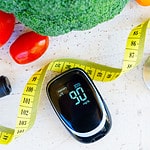Introduction
Knee overuse injuries are a frequent cause of discomfort and disability, and can be hard to manage. Heat and cold therapy offer quick relief from pain and swelling, and protect the joint from further harm.
We’ll look at the benefits of using these therapies, and give tips on how to utilize them properly:
Definition of Overuse Knee Pain
Overuse knee pain is when your joints hurt due to too much activity. It could be from running, walking, going up stairs a lot, or playing sports without warming up/cooling down. It’s also called runner’s knee, jumper’s knee, tennis elbow, or shin splints, depending on where it hurts.
This pain is caused by inflammation in the muscles and tendons around the knee joint, a too-tight joint capsule, or an imbalance in muscle strength. You need to get diagnosed so the right treatment can be used. Treatments include:
- Rest and activity changes
- Physical therapy
- NSAIDs
- Steroid injections
- Heat/ice therapy
- Bracing
Benefits of Heat and Cold Therapy
Heat and cold therapy, also known as thermotherapy and cryotherapy, have been around for centuries. People use it to heal physical illnesses. It is often recommended for relieving knee pain from overuse injuries such as tendinitis, bursitis and arthritis.
Heat therapy increases blood flow, reducing inflammation, bettering circulation and calming muscle spasms. It also blocks the transmission of pain signals. Cold therapy can reduce inflammation, swelling and pain by decreasing nerve activity. You should apply cold right after an injury to stop further tissue damage.
Heat and cold can be useful for minimizing knee pain from overuse injuries. But never put them on skin directly. Put towels or pads between heat or cold and your knee.
Heat Therapy
Heat therapy is a great way to get some relief from overuse knee pain. It reduces inflammation and makes things less stiff. You can get heat therapy through hot packs, warm baths, or heat wraps. And it helps improve blood flow and oxygen in the area, so your body can heal and the pain can go away.
Types of Heat Therapy
Heat therapy is a popular treatment for relieving overuse knee pain. It works by raising the temperature of the area, increasing circulation and relaxing muscles. The goal is to reduce spasms, stiffness, and pain.
Two types of heat therapy exist:
- External Heat Therapy: Heating pads, baths, infrared lamps, electrical stimulation, or ultrasonography. The type depends on the severity of the injury.
- Internal Heat Therapy: Radiofrequency ablation, ultrasound, or hydrodissection. A doctor or physical therapist should do this.
It’s essential to talk with your doctor before using heat therapy. With the right advice, however, hot or cold therapy can help reduce pain.
How to Apply Heat Therapy
Applying heat therapy can be a great way to help reduce pain, inflammation and muscle tension. It increases circulation and encourages healing, making your joints less stiff and more flexible. Heat also increases your body’s endorphin levels which gives you a sense of comfort. If you have chronic knee pain due to overuse, a warm compress or paraffin wax can help reduce the pain and relax you.
For people with overuse knee injuries such as IT Band Syndrome, heat therapy is best applied before any physical activities. Put a warm pack or heat wrap on the affected area for 15-20 minutes before you start.
Sometimes, cold therapy is better for relieving muscle spasms such as Runner’s Knee. After the cold treatment (10-15 minutes), apply heat for 15-20 minutes for complete relief from pain and tightness. You may want to switch back and forth between hot and cold treatments throughout the day for the best results for tendinitis or Runner’s Knee Syndrome.
Potential Risks and Precautions
Heat and cold therapies can be used to ease knee pain. But, both have risks and side effects.
Heat therapy may cause skin burns or irritation if used too long or not applied properly. Read instructions carefully, and never use heat beyond 20 minutes.
Cold therapy can lead to frostbite if skin temperature drops too much or for too long. Avoid direct contact between cold devices and sensitive areas like joints or bones. If you feel tingling or numbness in an extremity, stop cold therapy.
Speak to a doctor before using either of these treatments. They can provide advice based on your specific situation and their knowledge of physiotherapy. This way, you can get the best results and reduce potential risks or side effects.
Cold Therapy
Cold Therapy is a top-notch way to treat knee overuse injury pain. It can shrink inflammation and swelling of the joint tissue, providing long-term pain control. Cold Therapy also assists in calming muscle spasms and stiffness.
Let’s have a closer look at the advantages and drawbacks of Cold Therapy for knee pain:
Types of Cold Therapy
Cold therapy is a way to reduce pain and inflammation. It utilizes items like ice, cold packs, and frozen veggies. It is often used to treat knee injuries from overuse in athletes and active people.
Ice is the most common cold therapy. It can be done with direct or indirect application. Direct application involves placing a cloth or towel with ice on the sore spot for 10-20 minutes multiple times a day. Prolonged direct contact with ice may lead to tissue damage.
Indirect application uses cold packs with gel inside. The cold packs should be put in the freezer for at least 30 minutes before use. This way, there’s less chance of icy burns. Indirect application allows more flexibility in applying the cold therapy.
How to Apply Cold Therapy
Cold therapy, also known as cryotherapy or cryo-therapy, is a way to reduce swelling and aid recovery. Cold therapy wraps can provide pain relief and help the body’s natural healing process. Here are tips for applying them:
- Always use a padded layer between the skin and the bandage. Cloth, non-woven bandage or an old t-shirt is ideal.
- Gently stretch the wrap over the knee joint. Draw in excess fabric, secure snugly but not tightly.
- Tighten here and there if needed. Pay attention to creases and folds, as these may cause contact burns.
- Remove after 15 minutes, no longer than twice daily. No more than 2 hours total per day to avoid frostbite or other injuries.
- Keep away from heat sources such as heater vents, radiators, flames, or extreme temperatures. Damage may lead to injury.
Potential Risks and Precautions
Cold therapy, such as ice therapy and cold compresses, can relieve overuse knee pain safely and effectively. However, it has risks and precautions. People with certain conditions should use this treatment cautiously or not at all. These include:
- Recent surgery
- Certain medications (e.g. blood thinners)
- Circulatory issues or cold sensitivity
- Family history of cryoglobulinemia
- Pregnancy
Before using cold therapies for overuse knee pain, consider any other medical conditions you have. Speak with your doctor to make sure the treatment is safe. When using ice, wrap it in a thin towel before applying it to the skin to avoid irritation. Treatments should never last longer than 10 minutes and stop if you start feeling numbness or discomfort.
Combination Therapy
Heat and cold therapy together can provide relief from chronic knee pain caused by overuse. Heat increases circulation and relaxes tight muscles while cold reduces inflammation and pain. It’s a powerful combination!
How to use heat and cold therapy for overuse knee pain relief? Here’s the answer.
Benefits of Combination Therapy
Combination therapy uses two or more treatments – like medications and psychotherapy – at the same time. This can be beneficial for someone struggling with a mental health disorder, and may give more symptom relief than one intervention alone. Combining treatments gives the individual the best chance to lead an independent and productive life, reducing hospitalizations, keeping social connections and functioning in society.
Advantages of combination therapy include:
- A synergistic approach, giving extra therapeutic gains beyond those from the separate therapies.
- Education about the disorder being treated and insight into how life experiences change functioning in various situations.
- Multiple approaches tackling symptoms on multiple fronts, decreasing the risk of relapse over time.
- Lower medication dosages and fewer side effects, plus promoting physical activity instead of staying inactive from medication use.
- Self-awareness and direction for responding positively to life events without slipping back into former behavioral patterns.
All in all, combining treatments is likely to result in better outcomes than using one treatment approach only. It will give greater symptom relief, education on mental health, management strategies to stop relapse, and self-awareness with support from medical professionals.
How to Apply Combination Therapy
Combination therapy of heat and cold is a good way to treat overuse knee pain. Heat relaxes muscles, increases circulation and reduces swelling. Cold numbs soreness, reduces swelling and pain. Here’s a guide to help you use these therapies to get the best results.
- Start with Heat Therapy. Apply a heat pad or hot water bottle on the knee for 15-20 minutes. Don’t leave it on for longer as it can cause damage.
- Use an Ice Pack. Apply a cold compress or gel pack to the affected area for 10-12 minutes. Don’t leave it on too long as it can reduce blood flow and lead to more inflammation.
- Alternate Treatment. Repeat steps 1 & 2 four times. This helps your body adjust and react differently each time. Studies show this is more effective than using one of them alone for a long time.
Potential Risks and Precautions
Heat and cold treatments can provide relief, yet they can also bring harm. Ask a doctor or physical therapist if they are safe for your condition.
Be careful when using heat. Too much can damage tissue. Keep it warm, not too hot. Move the pack around, avoiding ‘hot spots’.
Cold treatment has its own risks – frostbite, nerve and circulation issues. Don’t keep the ice pack on for longer than 20 minutes. Wrap it in foil or cloth to avoid direct contact.
Conclusion
In conclusion, heat and cold therapy can be useful for relieving knee pain caused by overuse. Both are recommended after and during physical activities like running or sports. Heat helps reduce inflammation and soothe the muscles. Cold is better for numbing the pain and reducing swelling.
It is advised to start with cold therapy if you have an active episode of knee pain, as it is more likely to reduce inflammation than heat. Always talk to your doctor or physical therapist before beginning a new treatment or making any changes to your health, as individual needs may vary depending on underlying conditions or personal preference.
Frequently Asked Questions
Q: What is heat and cold therapy?
A: Heat and cold therapy is a type of treatment used to help relieve pain and inflammation in the knee caused by overuse. This therapy uses either heat or cold to reduce swelling and improve blood flow to the area.
Q: How do I use heat and cold therapy for overuse knee pain relief?
A: To use heat and cold therapy for overuse knee pain relief, start by applying a cold pack over the affected area for 15-20 minutes. This will help reduce inflammation and pain. Then, switch to using a heat pack for 10-15 minutes to improve blood flow and loosen up stiff muscles. Repeat this process as needed to manage your pain.
Q: How often should I use heat and cold therapy?
A: It is recommended to use heat and cold therapy for overuse knee pain relief 2-3 times per day. For best results, alternate between cold and heat applications.





